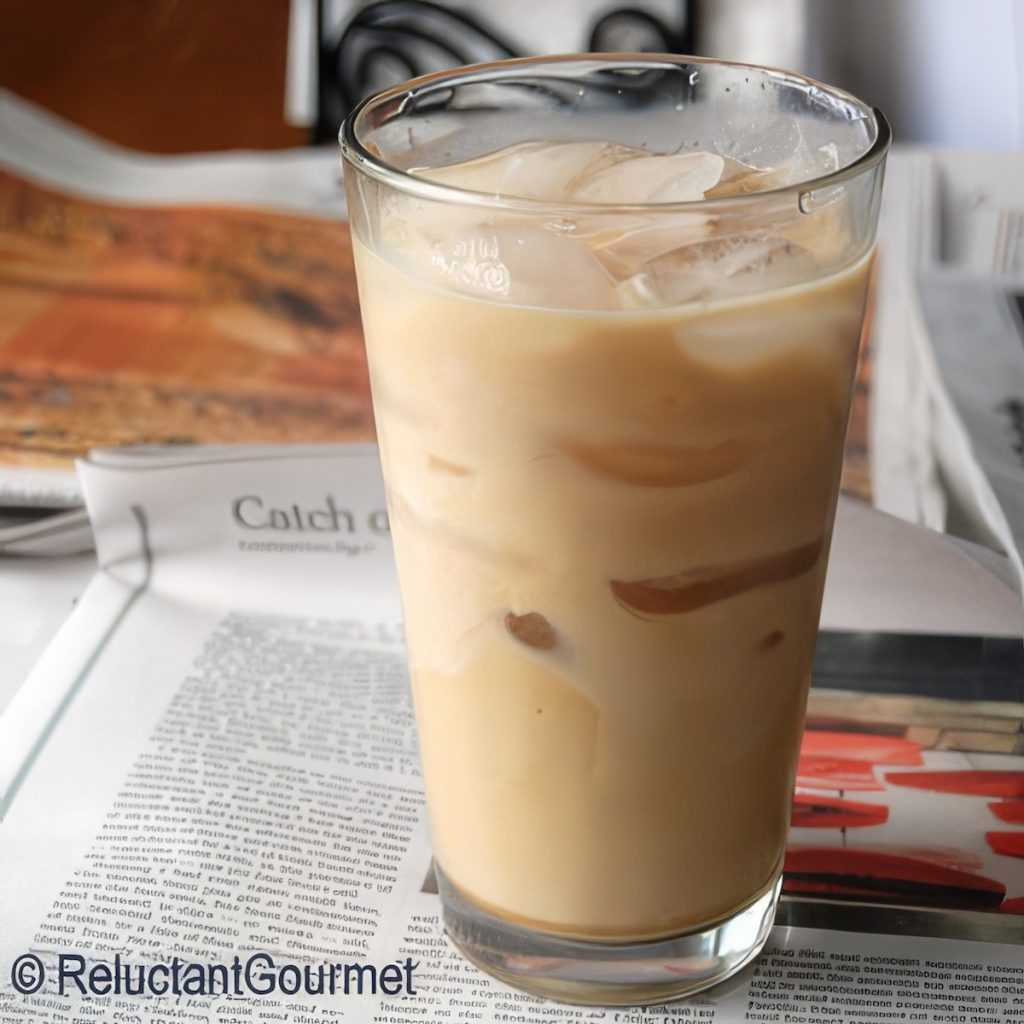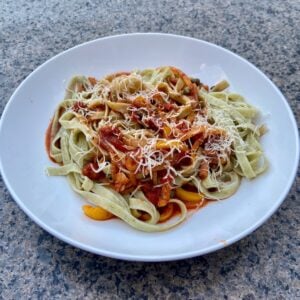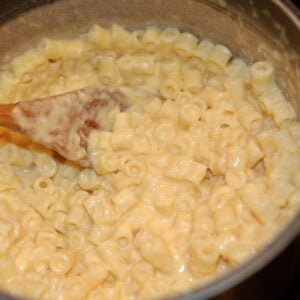Beat the Heat: How to Make Perfect Iced Coffee at Home
I like my cup of coffee in the morning. And now that the temperature has been hovering around 100 degrees F, I like my coffee iced. Most mornings, I brew a cup of half-caf with my Keurig Single Serve Coffeemaker, throw it in the refrigerator, let it chill for 15 minutes, pour it over ice, add a little milk, and enjoy. It’s simple and cost-effective.
However, there are mornings when I take the kids to day camp and decide to stop for coffee at one of our local chain coffee houses. You know who I’m talking about.
It’s been hot, even at 8:30 a.m., so I like to order iced coffee. However, I don’t understand why the iced coffee is more expensive than the hot coffee. Is it the cost of ice? Maybe the extra effort it takes to pour it over ice. Or maybe it’s that the cup is a little bigger. I don’t know.
What I know is if I buy a cup of hot coffee, bring it home, stick it in the refrigerator for 15 minutes to cool off, and then fill a glass with ice, I can make four glasses of iced coffee with their 1 cup of hot coffee!
So again, I ask, “Why are they charging me more for iced coffee?”
So, How Much More?
The percentage difference between the cost of iced coffee and hot coffee can vary widely depending on the location, brand, and specific offerings. However, iced coffee is about 20% to 50% more expensive on average than hot coffee. Here’s a breakdown to give you a general idea:
- Chain Coffee Shops:
- At large chain coffee shops, a hot coffee might cost around $2 to $3.
- An iced coffee at the same place might cost around $3 to $4.
- This represents a price increase of about 33% to 50%.
- Local Cafes:
- The price difference can be similar or slightly higher at local or specialty cafes.
- For instance, a hot coffee costs $3 to $4, while an iced coffee costs $4.50 to $6.
- This represents a price increase of around 20% to 50%.
These are average figures, and actual prices can vary based on location, the specific ingredients used (like specialty syrups or milk alternatives), and the establishment’s overall pricing strategy.
How Do Chain Stores Make Iced Coffee?
Chain stores typically have standardized processes for making iced coffee to ensure consistency and efficiency. Here are the common methods used by popular chain coffee shops:
- Brewed Coffee Over Ice:
- Brew Hot Coffee: Brew a double-strength batch of hot coffee using twice the amount of coffee grounds.
- Cool the Coffee: Allow the coffee to cool to room temperature or refrigerate it.
- Serve Over Ice: Pour the cooled coffee over a cup filled with ice.
- Cold Brew Coffee:
- Steep Coarse Coffee Grounds: Mix coarse coffee grounds with cold water in a large container.
- Steeping Time: Let the mixture steep for 12-24 hours in a refrigerator.
- Filter: Strain the coffee to remove the grounds, leaving a smooth, concentrated coffee.
- Serve Over Ice: Dilute the cold brew concentrate with water or milk to taste and serve over ice.
- Iced Espresso-Based Drinks:
- Brew Espresso: Pull a shot (or more) of espresso using an espresso machine.
- Cool the Espresso: Allow the espresso to cool slightly or pour it over ice to cool it quickly.
- Mix with Milk/Syrups: Add milk, flavored syrups, or sweeteners as desired.
- Serve Over Ice: Pour the mixture over a cup filled with ice.
- Pre-made Iced Coffee:
- Bulk Brewing: Brew large batches of coffee specifically for iced coffee.
- Chill and Store: Chill the coffee immediately after brewing and store it in refrigerated containers.
- Serve Over Ice: Pour the pre-made iced coffee over ice and add any additional flavorings or milk as requested.
Each method has its own nuances and may vary slightly by chain. However, the core principles remain the same: brew coffee, cool it, and serve it over ice. Some chains may also use special additives or flavorings to differentiate their iced coffee offerings.
OK, There Are Reasons
The higher cost of iced coffee compared to hot coffee can be attributed to several factors:
- Ingredients and Preparation:
- Ice: Iced coffee requires a significant amount of ice, which is essentially filtered and frozen water. The production and storage of ice add to the cost.
- Cold Brew Process: Some iced coffees, like cold brew, require a longer brewing time and more coffee grounds to achieve the desired strength, leading to higher costs in both time and materials.
- Packaging:
- Cups and Lids: Iced coffee often comes in larger cups and requires additional packaging, such as straws and lids, which are more expensive than those used for hot coffee.
- Condensation Protection: The packaging must be more durable to handle condensation and maintain the drink’s temperature.
- Labor:
- Complexity: Preparing iced coffee can be more labor-intensive, requiring steps like brewing, cooling, and mixing with ice, whereas hot coffee is often brewed and served immediately.
- Preparation Time: The additional steps for preparing iced coffee can increase labor costs.
- Storage and Equipment:
- Refrigeration: Iced coffee and the ingredients used (such as milk and syrups) need refrigeration, which incurs additional costs for storage and equipment.
- Specialized Equipment: Some iced coffee methods require specialized equipment (like cold brew towers or nitro coffee systems), which adds to overhead costs.
- Market Demand and Perception:
- Seasonal Demand: During warmer months, the demand for iced coffee rises, and this seasonal preference can justify higher pricing.
- Perceived Value: Consumers often perceive iced coffee as a premium product, allowing cafes and coffee shops to price it higher.
All these factors combined contribute to the higher cost of iced coffee than hot coffee.
What If I Want to Make It at Home?
Yes, I can make my own coffee at home by following a simple process. Here’s a step-by-step guide to making iced coffee:
Method 1: Brewed Coffee Over Ice
- Brew Coffee:
- Brew a pot of coffee using your preferred method (drip, French press, etc.). Use double the amount of coffee grounds you typically use for a stronger flavor.
- Cool the Coffee:
- Let the coffee cool to room temperature. If you’re in a hurry, you can place it in the refrigerator to cool more quickly.
- Serve Over Ice:
- Fill a glass with ice cubes.
- Pour the cooled coffee over the ice.
- Add any desired milk, cream, sweeteners, or flavorings.
Method 2: Cold Brew Coffee
- Mix Coffee Grounds and Water:
- Combine coarsely ground coffee with cold water in a large jar or pitcher. A common ratio is 1 cup of coffee grounds to 4 cups of water.
- Steep:
- Stir the mixture to ensure all the grounds are saturated.
- Cover and let it steep in the refrigerator for 12-24 hours.
- Strain:
- Use a fine-mesh sieve, coffee filter, or a special cold brew coffee maker to strain out the coffee grounds, leaving you with a smooth coffee concentrate.
- Serve Over Ice:
- Fill a glass with ice cubes.
- Dilute the cold brew concentrate with water or milk to taste (typically 1:1 ratio, but adjust based on your preference).
- Add any desired sweeteners or flavorings.
Method 3: Iced Espresso
- Brew Espresso:
- Brew a shot (or more) of espresso using an espresso machine or a stovetop espresso maker.
- Cool the Espresso:
- Let the espresso cool slightly or pour it over ice to cool it quickly.
- Serve Over Ice:
- Fill a glass with ice cubes.
- Pour the cooled espresso over the ice.
- Add milk, cream, sweeteners, or syrups as desired.
Tips for Better Homemade Iced Coffee
- Coffee Ice Cubes: Freeze leftover coffee in ice cube trays and use these coffee cubes in your iced coffee to prevent it from becoming diluted as the ice melts.
- Sweetening: Sweeten your coffee while it’s still hot for easier dissolving, or use simple syrup (sugar dissolved in water) to sweeten cold coffee.
- Experiment with Flavors: Add vanilla extract, cinnamon, cocoa powder, or flavored syrups to create your favorite coffee shop-style drinks at home.
Making iced coffee at home may be cost-effective and allow me to customize it exactly to my liking, but it does seem like a lot of extra effort. It just might be easier to spend the extra money to buy it at my local java joint.








6 Responses
ice-coffee !!!!! loved the article lots of chuckles and those salads mmm i have never sent an email back but this one i had to answer thanks !!! you made my day
Glad to help – RG
“Why are they charging me more for iced coffee?”
Well that’s obvious: Because (some/enough) people are willing to pay it.
I guess so – RG
Many coffee shops brew their iced coffee double-strength so that it doesn’t water down when poured over ice. This, as well as the cost of ice, probably amounts to the increased price.
Hi James, that does make sense however when I take my first sip of coffee shop ice coffee, it doesn’t taste any stronger than when I make my own. Cost of ice is a factor. – RG
That’s a great question. I have to admit, I never noticed that iced coffee costs more than regular coffee. I always just assumed that it was because there was more liquid volume, but you make a great point RG about the ice.
I guess something I’ll have to look out for…
plastic cups cost more than paper; added cost of ice; not everyone adds milk/cream to their hot coffee; chilled coffee has the cream in it.
Good points although when I buy ice coffee there is no cream in it. But that doesn’t make up for only using 1/4 the amount of coffee. – RG
If it is THE chain that you are referring to, I believe that the higher cost is because the syrup is included in the drink price. With hot coffee it is easy to get your sugar to dissolve yourself, but with the iced coffee most people need a pre-dissolved dose. If you request syrup in your hot coffee they charge extra for it! There is also the fact that there are a couple extra steps involved in making the drink, so your server is doing more work than for simple hot coffee.
Hi Beverly, all good points yet when I order ice coffee from any merchant including THE one your are referring to, I think, they usually have a pitcher of it in the refrigerator so I have no idea how often they brew fresh. I don’t use sugar in my coffee so they don’t have to add any syrup so it is pretty easy for the server to fill up a cup of ice and pour the premade ice coffee. Thanks for your suggestions. – RG